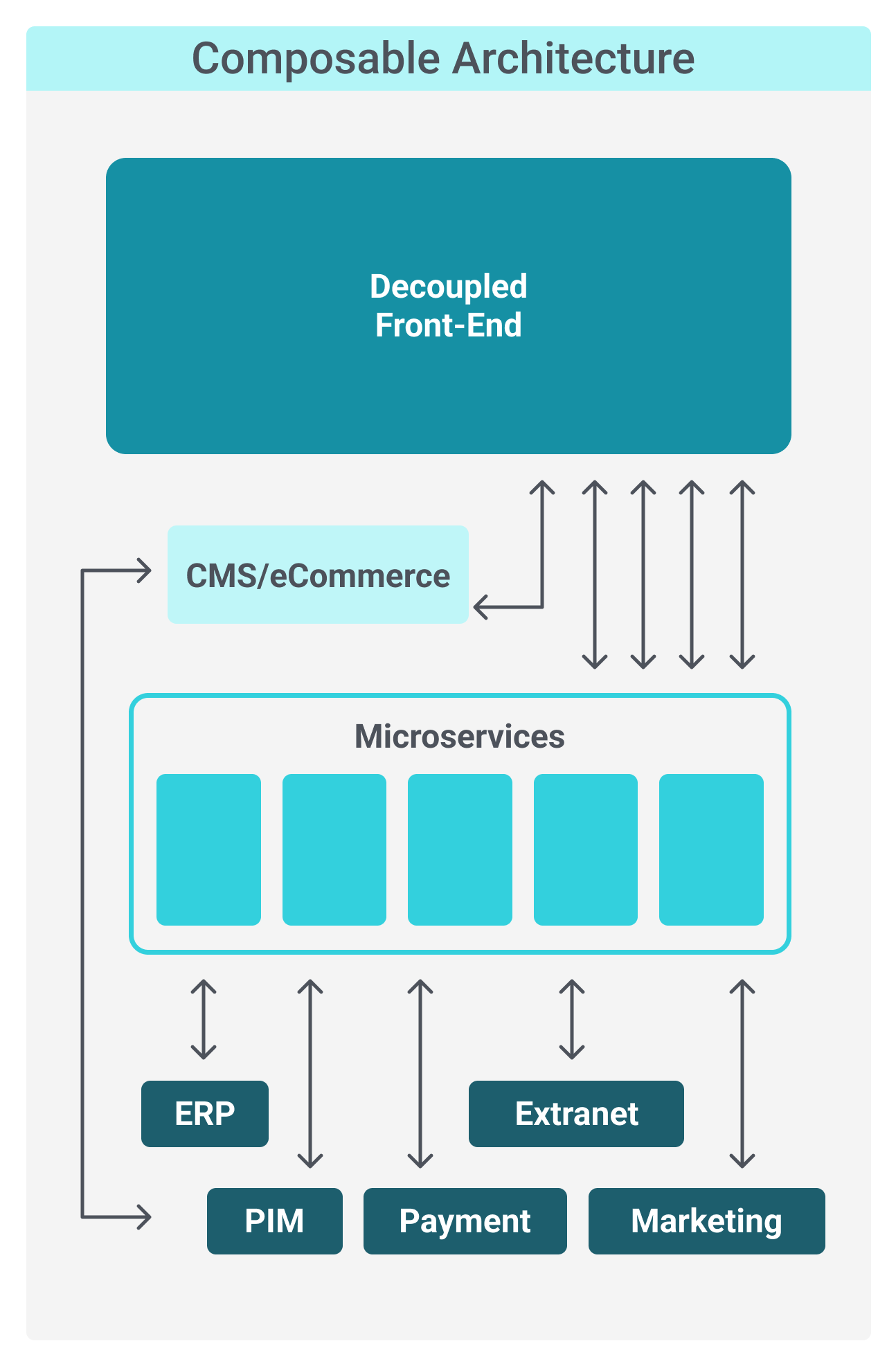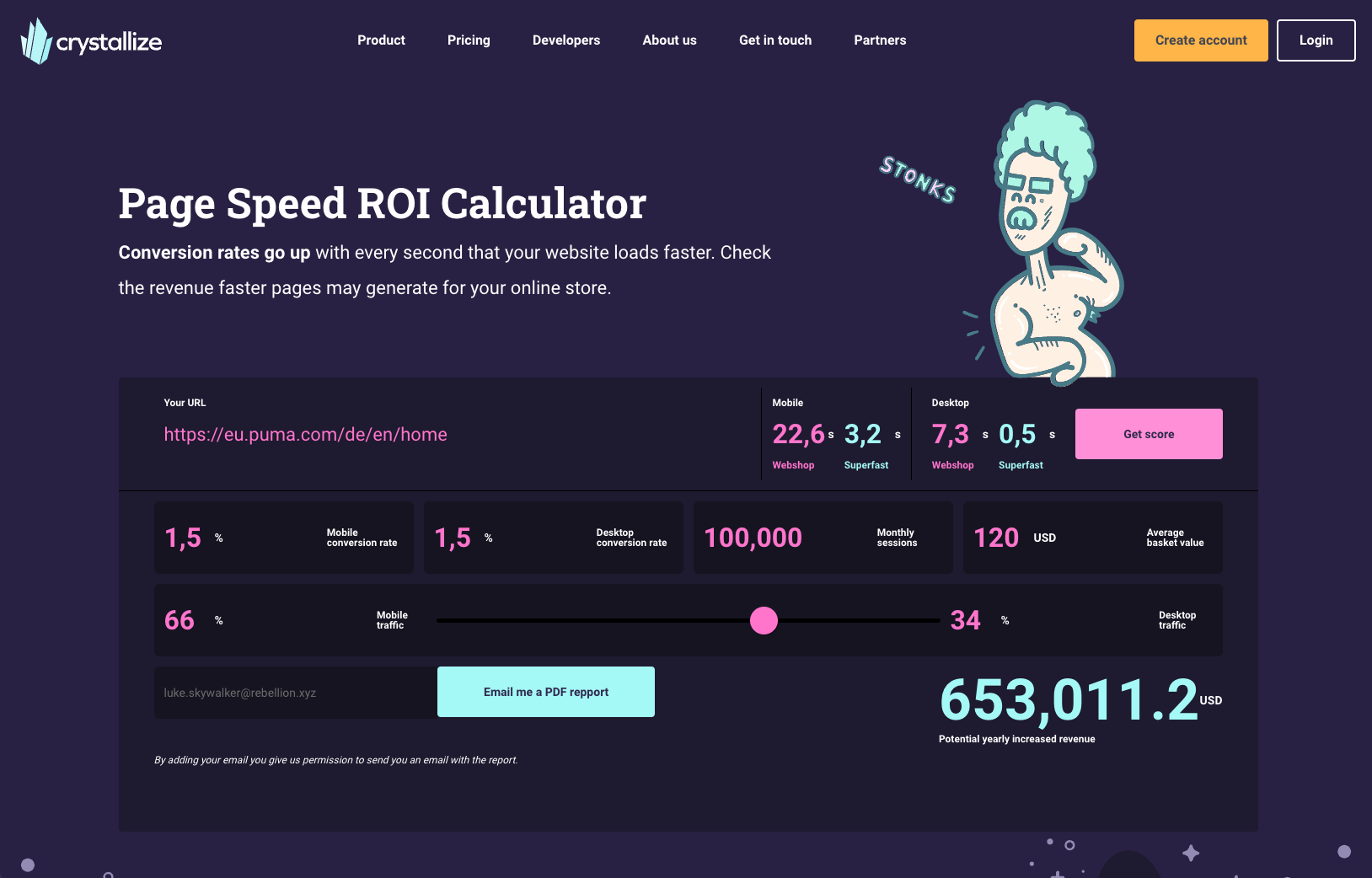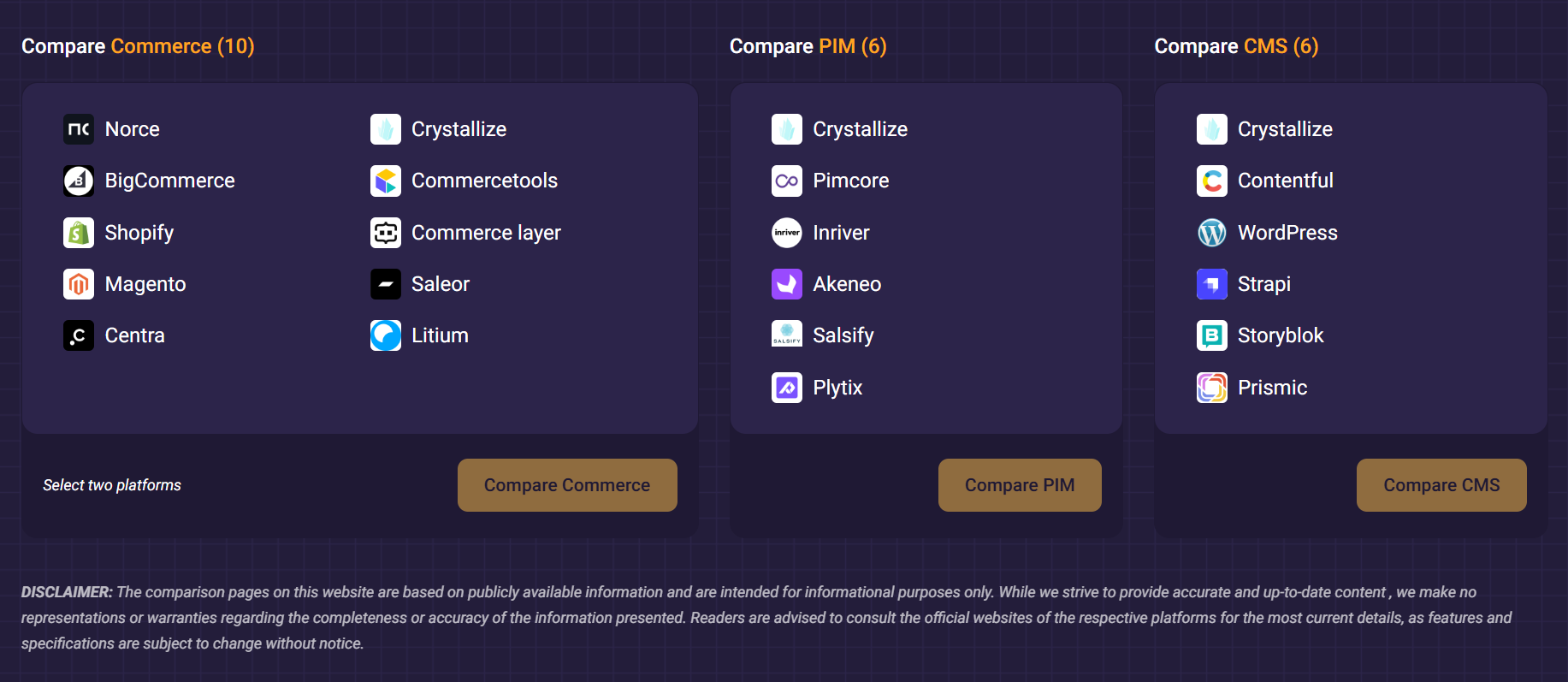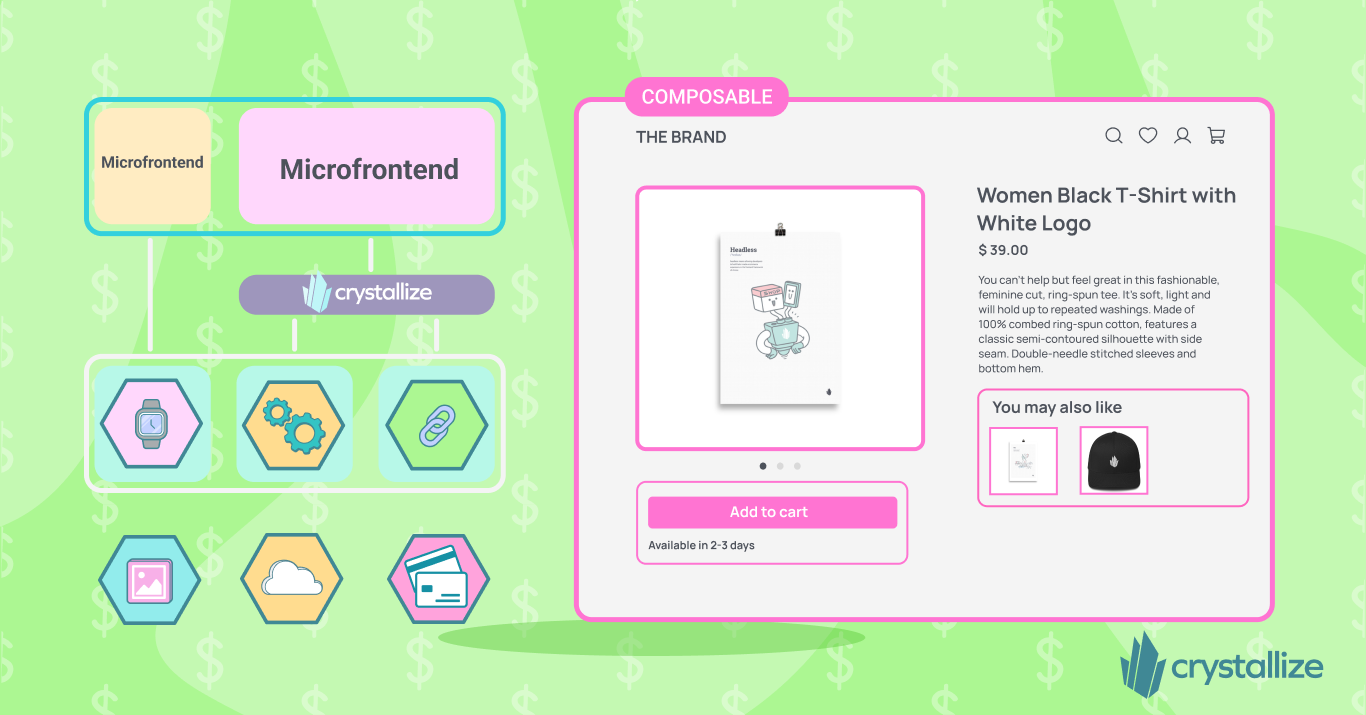Breaking Free from Legacy Commerce: Your Roadmap to Headless Success
Switching to headless commerce is not a simple task. You’ll hit bumps along the way, from higher complexity to new workflows for your team. But the rewards make it worthwhile.

Among those not currently using headless, nearly 98% plan to evaluate headless solutions over the next 12 months. (source: headless stats). Enterprise commerce teams know the future is headless and composable, yet many find themselves stuck in analysis paralysis.
The benefits of a modern, API-driven tech stack are clear – greater agility, better customer experiences, and freedom to choose best-of-breed services.
So why do even tech-savvy organizations hesitate to modernize?
This article explores the key barriers preventing companies from moving off legacy commerce platforms, the hidden costs of “playing it safe,” and proven strategies to adopt a headless (composable) architecture incrementally and with confidence. We’ll also compare approaches like pairing Magento with a headless CMS (e.g., Contentful) versus using an all-in-one headless commerce platform like Crystallize, so that you can chart the best path forward for your business.
Why Headless, Why Now?
Customer expectations are rising faster than most legacy platforms can keep up. Shoppers expect lightning-fast load times, seamless mobile experiences, and personalized content wherever they choose to engage with a website, app, social channel, or even smart devices. Falling short doesn’t just frustrate users; it costs conversions and loyalty.
Studies show that even a one-second delay in page load can reduce conversions by up to 7% (source). That’s enough to make or break peak-season campaigns. For example, by combining Crystallize’s flexibility and fast setup with Next.js performance tuning, Sweef delivered a smooth, intuitive user experience. The results? CTRs went up significantly — even while Sweden’s furniture market was down 46%. (Full case details here.)
The market is already moving. Enterprise teams know that traditional, monolithic platforms weren’t built for today’s pace of change. The shift toward API-driven, composable systems is no longer experimental; it’s becoming the default.
So why headless commerce, and why now? Because it delivers on the four things modern commerce demands most:
- Performance – server-side rendering, static generation, and optimized APIs drive faster load times and smoother shopping experiences.
- Agility – front-end teams can ship updates independently of back-end systems, giving you shorter release cycles and more control.
- Storytelling power – decoupling makes it easier to weave rich content (videos, lookbooks, guides) directly into the shopping journey.
- Scalability – the same back-end can serve multiple front-ends, from global websites to apps to emerging channels, without duplication.
Headless commerce isn't just about keeping up; it's a real growth engine. It helps you make more money by boosting conversions and sales, and by using your resources way more efficiently.
Stuck in Neutral: Why Analysis Paralysis Strikes?
Modernizing a legacy commerce stack can feel overwhelming. With the explosion of composable commerce solutions, teams face an overabundance of choices – causing decision-makers to freeze. This “vendor fatigue” leaves many organizations evaluating endless combinations of e-commerce platforms, CMS, PIM, search, and other microservices without ever pulling the trigger.

Ironically, the flexibility of composable architecture becomes a double-edged sword: the sheer number of options can overwhelm teams and lead to analysis paralysis.
The average enterprise now uses 473 different software tools in its tech stack (source). With numerous specialized API-based services available on the market, it can be daunting to decide which pieces to select and how to integrate them. Stakeholders worry about making the “wrong” choice, so they make no choice at all.
Even teams sold on going headless may fear the disruption to ongoing business. Replatforming has a reputation for being risky – no one wants to be the one to “break” an enterprise storefront that’s currently bringing in revenue. This cautious mindset can lead to over-analysis, lengthy RFP (Request for Proposal) cycles, and attempts to perfect a plan before taking the first step.
How do you overcome the paralysis?
The key is to inject structure and expert guidance into the decision process to help evaluate and select the right mix of technologies. Time-box discovery phases and focusing on business priorities, and you can avoid endless theoretical debates. It’s also useful to narrow choices by identifying your most critical needs (e.g., “We need a more flexible CMS for our content team” or “We must handle peak traffic better”) and starting there.
In short, don’t try to boil the ocean. Pick a high-impact area to modernize first – and know that not deciding is often riskier than choosing a good-enough path and iterating on it.
The Human Factor: How Teams Are Affected
Technology shifts don’t happen in a vacuum. Moving to a headless setup reshapes how your teams work day-to-day, and those changes can be both empowering and challenging.
For developers, headless means freedom. The dev lead who realized their team was spending half their time debugging API errors, rigid templates, or outdated tech stacks no longer constrains them. Instead, they can choose modern frameworks, build custom frontends, and deliver innovative features more quickly. But with that freedom comes complexity. Stitching together APIs, maintaining multiple services, and setting up robust deployment pipelines can stretch teams thin if skills and processes aren’t in place.
For marketers and content teams, headless unlocks flexibility to tell richer stories. They can push interactive campaigns, embed videos, and experiment with formats that legacy CMS tools often can’t handle. The trade-off? Without the right visual editing and preview tools, they may feel more dependent on IT to bring ideas to life. A headless stack that doesn’t address this can frustrate the very teams it’s meant to empower.
For leadership, the shift boils down to ROI and risk. Executives want to know: will this reduce costs, open new revenue streams, or position us ahead of competitors? They also want assurance that disruption will be minimal and that risks, such as downtime, budget overruns, and failed integrations, are controlled.
Securing Executive Buy-In for Transformation
No modernization initiative can succeed without support from the top. Getting executive buy-in – whether it’s the CEO, CIO/CTO, CFO, or board – is often the first (and biggest) hurdle to clear for a headless commerce project.
How do you convince busy executives to approve the budget and endorse a potentially disruptive transformation?
Translate tech speak into business value and address the concerns that matter most to leadership. For example, highlight how modernizing will improve operational efficiency, open new revenue streams (e.g., new channels or better conversion rates), reduce costs (through lower maintenance or cloud scalability), or mitigate risks (better security, less downtime). Tie the technology change to the company’s strategic goals – whether that’s entering new markets, improving customer experience, or outperforming competitors.
Build a data-driven business case. Include industry benchmarks (for instance, how competitors adopting headless are seeing X% higher conversions), and quantify the expected benefits for your business. Can you reduce page load time by a few seconds? What revenue uplift might that yield (BTW, our page speed ROI calculator can help with that)? Will a new architecture cut maintenance costs by a certain amount over 5 years? Executives respond to numbers that show clear ROI and a realistic payback period.

One of the major concerns leaders will have is risk – specifically, the risk of failure, disruption, budget overruns, etc. – and address these risks upfront. Outline your risk mitigation plans: for example, a phased rollout (to limit business disruption), a solid backup/recovery plan, staff training programs, and choosing proven technologies. Additionally, present a high-level roadmap with phases and milestones. Show that the initiative is broken into manageable chunks with decision gates – this makes the journey feel controlled and allows the C-suite to visualize how the transformation will roll out over time. Executives are far more likely to green-light a project that has a clear plan for execution and checkpoints to evaluate progress.
Lastly, consider proposing a pilot project or proof-of-concept as the first step, rather than requesting a blank check for a complete overhaul. Executives often prefer to “start small” to see results before committing big budgets. For example, deploy a headless frontend for a smaller brand or region first, or integrate a new search service on a subset of the catalog. Start with something that can be delivered in a few months and measured for its impact. This approach reduces initial risk and provides real data to validate the approach. Early wins from a pilot can build executive confidence and create internal champions at the leadership level once they see the tangible improvements.
The Power of Incremental Composable Success
The good news is that moving to a modern, headless architecture does not have to be an all-or-nothing, overnight switch. In fact, some of the most successful digital transformations take an incremental, blended approach. Instead of a risky “big bang” replatforming, companies gradually introduce composable components alongside legacy systems – proving out value step by step.
You can start small, score early wins, or go with a hybrid approach.
Starting small means starting by decoupling the frontend UI of your storefront while keeping the existing backend in place. Modern frontend frameworks (such as Next.js, Astro, Remix, and TanStack) can consume APIs from your legacy platform, immediately improving the customer experience without altering the core commerce engine. Vercel, for example, describes a global sportswear retailer that did exactly this – they kept Salesforce Commerce Cloud as the backend but migrated the frontend incrementally (source).
Hybrid typically refers to the gradual integration of new API-driven services alongside the existing system, allowing the legacy system to be safely retired. For instance, you might start by replacing the legacy CMS with a headless content service, or offloading search to a modern SaaS search API, while the rest of the platform stays as is. Over time, more pieces are swapped out. This way, you essentially turn a massive transformation into a series of smaller, manageable projects. This de-risks the effort, allowing your organization to learn and adapt as you proceed. Perhaps most importantly, it demonstrates to skeptics that a composable architecture can work for your business – turning fear of the unknown into confidence fueled by real results.
Implementation Pitfalls to Avoid
Headless commerce promises speed, flexibility, and scale—but getting there isn’t without risks. Many projects stumble not because the tech fails, but because execution misses a few critical details. Here are some the most common pitfalls, and how to avoid them:
SEO risks with SPAs. Single-page applications can load beautifully for users but poorly for search engines. If crawlers can’t see your content, rankings will slip.
Mitigation: Use server-side rendering (SSR) or static site generation (SSG) for key pages, and always validate crawlability with tools like Google Search Console.
Integration sprawl. Freedom to choose best-of-breed tools is powerful, but stitching together too many services creates brittle architectures and endless vendor management.
Mitigation: Define must-haves vs nice-to-haves early. Consolidate where possible, and consider an API gateway or GraphQL layer to simplify complexity.
Underestimating content/editor workflows. Marketers often expect drag-and-drop editing, but many headless CMS tools aren’t built that way. Without planning, content teams end up bottlenecked by IT.
Mitigation: Involve marketers in CMS selection. Look for preview tools, visual editors, or train content engineers to bridge the gap. Pilot workflows before scaling.
Cost and time overruns. Composable projects can balloon if scope creeps or integrations prove harder than expected. Too many teams start with a “big bang” replatform and stall out.
Mitigation: Break migration into phases. Start small, deliver quick wins (like a headless frontend), and measure impact before expanding. Keep budgets tied to outcomes, not open-ended builds.
Avoiding these pitfalls doesn’t mean the journey will be effortless—but it keeps you focused on progress, not fire drills. With the right guardrails, headless commerce becomes an accelerator instead of a distraction.
Comparing Approaches: BigCommerce + Contentful vs. Crystallize for Headless Commerce
As you consider the move to a headless, composable architecture, an important decision is choosing the right platform stack. There are two ways to go about this: go with a combo where each platform covers one part of your business/website functionality, or go with a single platform. The best way to explain this is with an example.
💡Pro tip: Please keep in mind this is more about the covering approach than the platforms themselves. You can easily replace the ones mentioned here with any other in our platform comparison tool, be it a monolith commerce, PIM, headless CMS, etc.

Combo approach. This means pairing specialized solutions – for example, using BigCommerce as your core commerce engine, which handles commerce logic (product info, pricing, carts, checkout, etc.) and integrating it with a headless CMS like Contentful for content management. The frontend (storefront) is decoupled and pulls data from both sources. The benefit of this approach is that you leverage top-tier components in each domain; the trade-off is the complexity of integration; you now have two (or more) systems to knit together and maintain. While Contentful provides robust APIs and an intuitive UI for marketers, it is not an e-commerce platform out of the box. You’ll need to ensure your BigCommerce data (product info, inventory, etc.) and Contentful content are synchronized to present a seamless storefront. Additionally, licensing and costs may increase as you pay for multiple enterprise services.
Single headless platform. An alternative is to choose a single platform that can combine commerce, content, and product information management in one headless solution. Crystallize is an example of this approach. It merges the functionalities of a PIM, e-commerce engine, and CMS into a unified system. This integrated approach can significantly simplify your architecture. Instead of maintaining (and paying for) separate PIM, CMS, and commerce platforms, you have a single service that covers all three.
For teams seeking the benefits of composable architecture without integrating multiple vendors, a unified solution can be very attractive. It reduces the potential points of failure and data silos, as your content and product data reside in a single system. It’s also inherently built for headless delivery, allowing your frontend developers to consume both product information and content from a single API, rather than juggling two different APIs (as in the earlier scenario, one for SAP and one for Contentful).
Which Approach Is Right for You?
Enterprises already invested in BigCommerce often keep it as their core commerce engine while extending it with Contentful for flexible, headless content management. BigCommerce’s Open API and composable approach make this integration seamless, enabling faster, more dynamic frontends. Contentful adds the editorial agility and localization tools that legacy CMS systems lack.
The result is a modern, scalable stack that balances robust commerce with rich, adaptable content at the cost of a bit more architectural complexity.
On the other hand, organizations that value modern tooling, simplicity, speed of implementation, and lower integration overhead may lean toward an integrated headless platform like Crystallize. With everything under one roof, you eliminate the need to constantly sync data between separate CMS and commerce systems – your product catalog, inventory, and marketing content are all managed together.
This leads to faster development cycles and easier maintenance. Intuitive UI that unifies product management and content modeling; it’s natively built to handle multi-channel and multi-market needs (e.g., multi-language content, multiple storefronts). The downside are learning curve and the need to adjust to new mental models of how this works. By using a platform like Crystallize, companies can essentially adopt a composable architecture in one step, rather than piecing it together themselves. This can accelerate time-to-market for a headless deployment and reduce the burden on your development team to integrate and maintain multiple systems.
In practice, the decision might also hinge on what you’re starting with. If you are currently on BigCommerce and feeling the pain of its monolithic nature, you might either add Contentful and go headless (as an interim step), or consider a bigger leap to a modern commerce platform (be it Crystallize or another MACH-certified commerce SaaS). If you’re starting from scratch or your legacy platform is at end-of-life, choosing a unified headless commerce service could give you a fresh start with minimal components. There are also hybrid options – for example, you could use Crystallize for commerce + content, but still integrate it with other specialized services (perhaps a custom CRM or a third-party search).
The composable philosophy means you have the freedom to mix and match; just remember that every integration has a cost. The more your new stack can be consolidated while still meeting requirements, the smoother your implementation and future upgrades will likely be.
The bottom line is that both the BigCommerce+Contentful style and the Crystallize style are valid paths to headless commerce. What’s important is choosing the route that best aligns with your team’s capabilities and your business objectives.
🤔Have You Noticed?
This article offers a comprehensive roadmap for achieving success with headless commerce. Tackle each chapter sequentially, completing the tasks within before moving on.
- Why change?
- What holds you back?
- Who’s impacted?
- How to start?
- How to sell it internally?
- Which stack?
- How to keep improving?
Post-Launch Optimization
Launching a headless commerce site isn’t the finish line—it’s the starting point for continuous improvement. The real gains come from what you do after go-live.
- Monitor KPIs relentlessly. Keep a close eye on site speed, conversion rates, and customer experience metrics to ensure optimal performance. Compare against your pre-launch baselines. If performance dips or bounce rates rise, address the issues promptly. Headless gives you the tools; now it’s about disciplined measurement.
- Iterate on the frontend UX. One of the biggest perks of headless is agility. You can tweak design, test layouts, or roll out new features without touching the backend. Utilize A/B testing and feature flags to conduct safe and effective experiments. Small, continuous updates will keep the experience fresh and customer-centric.
- Expand into new channels. Your APIs aren’t just for the website. Post-launch is the perfect time to connect apps, marketplaces, in-store kiosks, or social shops. With the backend already decoupled, extending into new touchpoints should be easier and faster than before.
- Establish governance and scaling practices. As your architecture grows, so does complexity. Establish clear rules for API versioning, data models, and code ownership from the outset. Decide who’s responsible for what, and document workflows to prevent silos. Scaling smoothly isn’t just about technology—it’s about transparent processes and accountability.
Optimization is where headless commerce proves its long-term value. The brands that thrive aren’t the ones that merely migrate; they’re the ones that treat headless as a living system that continually evolves with the business and its customers.
Move Forward with Confidence
Modernizing an enterprise commerce platform is undeniably a complex undertaking – but with the right approach, it’s a challenge you can tackle step by step. By understanding the psychological barriers (too many choices, fear of change), acknowledging the true costs of staying stuck, and leveraging an incremental adoption strategy, you can turn analysis paralysis into action, carefully evaluating tech options while bringing leadership along for the ride.
The journey to headless commerce success is a marathon, not a sprint, but every step you take away from legacy constraints is a step toward a more agile, competitive future for your business.
Embrace the change, back it with a solid plan, and watch your organization thrive in the new era of composable commerce.
We can help. Seriously, we can.
If you’re ready to take the first step, SIGN UP for FREE and start building, or BOOK a personalized 1-on-1 demo. Sometimes, the best way out of analysis paralysis is simply to start small.
🐰Follow the Rabbit

Headless Tech Stack: A Quick Rundown
In modern web development, you're bound to hear the term headless thrown around more often than not, especially in the growing landscape of content-driven applications and e-commerce platforms.

Essential Headless eCommerce Statistics for 2025
Thinking about taking your project or business headless in 2025? Great move! I’m sure there are naysayers. To battle them, here are headless commerce statistics for 2025.

